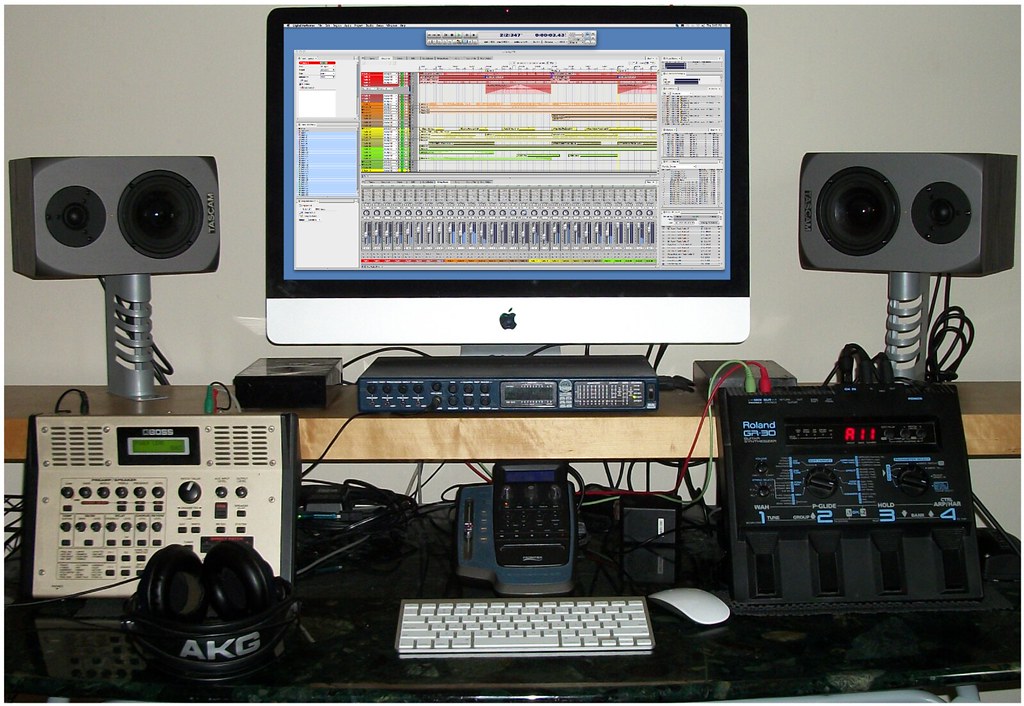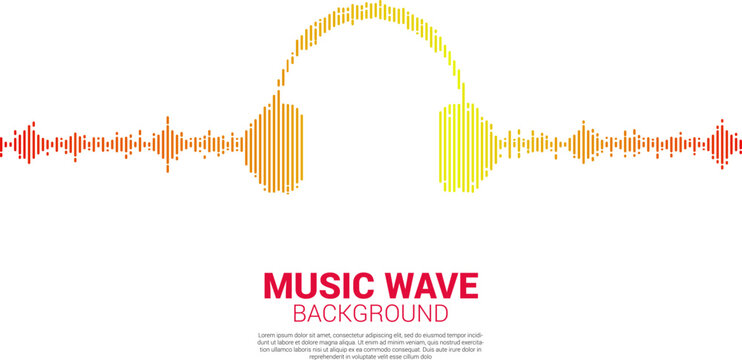Music production is an exciting field that combines creativity and technical skills. If you’ve ever wondered how your favorite songs are made, you’re in the right place. In this guide, we’ll provide a comprehensive introduction to music production, including its definition, importance, and components. Whether you’re a beginner or a seasoned musician, this guide will help you understand what music production is all about and how you can get started. So, let’s dive into the world of music production!
Table of Contents

Digital Audio Workstations (DAWs)
Digital Audio Workstations (DAWs) are software programs used for music production and are the central hub for all aspects of music production. DAWs provide a comprehensive set of tools for music production, including a multitrack recorder, a mixer, and a range of effects and processing tools. They also allow for MIDI sequencing, which is the process of creating music using digital instruments and samples.
Popular DAWs Used in Music Production
There are many different types of DAWs available, each with its own strengths and weaknesses. Some of the most popular DAWs used in music production include:
- Ableton Live
- Pro Tools
- Logic Pro X
- FL Studio
- Cubase
- Reason
How to Choose the Right DAW for Your Needs
Choosing the right DAW depends on a variety of factors, including your budget, your level of experience, and the type of music you want to produce. It is important to research different DAWs and try out demos before making a purchase, to ensure that the DAW you choose meets your needs. Some DAWs are better suited for electronic music production, while others are better for recording live instruments.
DAW Features and Functions
DAWs offer a wide range of features and functions, from basic audio recording and editing to complex MIDI sequencing and mixing. Some of the key features of a DAW include:
- Multitrack recording
- MIDI sequencing
- Audio editing and processing
- Mixing and mastering tools
- Virtual instruments and effects
DAW Tutorials and Online Courses
There are many resources available for learning how to use a DAW. Online tutorials and courses can provide a comprehensive introduction to using a particular DAW, as well as more advanced techniques and tips. It is essential to learn the basics of a DAW and practice regularly to become proficient.

Setting Up a Home Recording Studio
Setting up a home recording studio is an essential aspect of music production, particularly for musicians who desire to record high-quality audio in a cozy and convenient environment. A home recording studio can be set up in a spare room, a basement, or even a walk-in closet, depending on your budget and needs. Here are some factors to consider when setting up your home recording studio.
Acoustic Treatment
To achieve high-quality audio recordings, you need to consider the acoustics of your recording space. The sound quality of your recordings can be improved by using acoustic treatment, which includes sound-absorbing materials such as acoustic foam, diffusers, and bass traps. Acoustic panels can also be used to reduce echo and reverb in your recording space.
Selecting the Right Equipment
Your home recording studio setup will depend on your budget, needs, and the type of music you plan to produce. Some essential pieces of equipment for a home recording studio include:
- Audio interface – used to connect your microphones and instruments to your computer.
- Microphones – essential for capturing sound sources such as vocals, guitars, and drums.
- Studio monitors – used to listen to your recordings and make necessary adjustments to the mix.
- Headphones – used for monitoring during recording and mixing.
Recording Techniques
Recording audio at home can be challenging, as there are many factors that can influence the sound quality of a recording. Here are some tips for recording audio at home:
- Experiment with microphone placement to find the best sound.
- Use pop filters to prevent plosives and other unwanted sounds in your recordings.
- Record in a quiet environment to minimize background noise.
- Use headphones to monitor your recordings during the recording and mixing process.
Home Recording Studio Examples
There are many different ways to set up a home recording studio, depending on your budget and needs. Here are some examples of home recording studios:
- A simple setup with a laptop, audio interface, and microphone.
- A more advanced setup with multiple microphones, studio monitors, and acoustic treatment.
- A DIY setup using household items such as egg cartons, blankets, and pillows to absorb sound.
Setting up your home recording studio can be a fun and rewarding experience. With the right equipment and techniques, you can achieve professional-quality recordings from the comfort of your own home.

Audio Mixing Techniques
Audio mixing is the process of combining multiple audio tracks into a final stereo mix. It involves balancing levels, applying effects and processing, and creating a cohesive sound. In this section, we will dive deeper into the key aspects of audio mixing and provide some essential tips and techniques.
Explanation of Audio Mixing
Audio mixing involves taking individual tracks recorded during the music production process and combining them into a final mix. A well-mixed track brings out the best in each individual sound while creating a cohesive and balanced sound. During audio mixing, a sound engineer adjusts the levels of each track, applies effects and processing, and ensures that each element fits together seamlessly.
Tips and Techniques for Audio Mixing
There are many different tips and techniques for audio mixing, depending on the type of music being produced and the desired sound. Some general tips for audio mixing include starting with a good recording, using EQ to balance levels, using compression to control dynamics, and using reverb and other effects to create depth.
To achieve excellent audio mixing, it’s essential to have a clear understanding of the different elements in your mix. For example, it’s crucial to identify the lead or melody lines, the rhythm section, and any supporting instruments or effects. Once you have a clear understanding of each element, it’s time to start balancing their levels and frequencies.
To create a cohesive sound, it’s also essential to ensure that each sound element occupies its own space in the stereo field. Panning, stereo imaging, and EQ can help with this. Additionally, the use of automation can help to create dynamic and exciting changes in the mix.
Popular Audio Mixing Plugins and Effects
There are many different plugins and effects available for audio mixing, each with its unique sound and functionality. Some of the most popular plugins and effects used in audio mixing include Waves Plugins, FabFilter Pro-Q, and ValhallaDSP Reverb. Other popular plugins include the SSL G-Master Buss Compressor, the PSP VintageWarmer2, and the Soundtoys Decapitator.
Importance of EQ, Compression, and Reverb in Audio Mixing
EQ, compression, and reverb are three essential tools in audio mixing. EQ is used to balance levels and shape the sound of individual tracks, compression is used to control dynamics and even out levels, and reverb is used to create a sense of space and depth in a mix. Understanding how to use these tools effectively is key to achieving an excellent mix.

Mastering
Mastering is the final and essential stage of the music production process. It ensures the final mix is optimized for distribution and ready for playback on various sound systems.
What is Audio Mastering?
Audio mastering is the process of preparing a final mix for distribution. It involves intricate techniques that refine the overall sound quality of the final mix. Mastering can include anything from balancing levels to applying subtle processing to enhance the sound quality.
Tips and Techniques for Audio Mastering
There are numerous tips and techniques for audio mastering, and the choice of techniques used depends on the type of music being produced and the desired sound. Some universal tips for audio mastering include using EQ to balance levels, compression to control dynamics, and limiting to regulate loudness.
Popular Audio Mastering Plugins and Effects
To achieve a polished final mix, audio mastering engineers use various plugins and effects. The selection of plugins and effects used depends on the desired sound and the preference of the engineer. Some of the most popular plugins and effects used in audio mastering include iZotope Ozone, Waves Plugins, and FabFilter Pro-L.
The Importance of Loudness and Dynamic Range in Audio Mastering
Loudness and dynamic range are two crucial aspects to consider during audio mastering. A good mastering engineer will balance loudness and dynamic range to create a final mix that sounds great on various playback systems. A perfect balance between loudness and dynamic range can result in a mix that sounds full and dynamic, while still being clear and not distorted.

Music Production Genres and Styles
Music production is a vast field, encompassing a wide range of genres and styles, with each having its own unique characteristics. Having a good understanding of different genres and styles is essential for making music that sounds professional and polished.
Popular Music Production Genres and Styles
Here are some of the most popular music production genres and styles:
-
Electronic Dance Music (EDM): EDM is a genre of music that originated from the disco and house music scenes. It is characterized by the use of electronic instruments and a strong rhythmic beat.
-
Hip Hop: Hip hop is a popular music genre that originated in the African American communities of the United States. It is characterized by its use of rapping, beatboxing, and sampling.
-
Rock: Rock music is a genre of popular music that originated from the United States and the United Kingdom in the 1950s. It is characterized by its use of electric guitars, drums, and bass.
-
Pop: Pop music is a genre of popular music that originated in the 1950s. It is characterized by its use of simple and catchy melodies, as well as its focus on the vocals.
-
Jazz: Jazz is a genre of music that originated in the United States in the late 19th and early 20th centuries. It is characterized by its use of improvisation and syncopated rhythms.
Techniques for Creating Different Music Production Genres and Styles
Creating different music production genres and styles requires a combination of technical knowledge and creativity. Here are some techniques for creating different genres and styles of music production:
-
Musical scales and chord progressions: Different genres and styles of music often use different musical scales and chord progressions. For example, the blues scale is often used in blues music, while the major and minor scales are commonly used in pop and rock music.
-
Sound design techniques: Sound design is an important aspect of music production, and different genres and styles often require different sound design techniques. For example, EDM often uses synthesizers and digital effects, while rock music often relies on distorted guitar sounds.
-
Rhythms and drum patterns: Different genres and styles of music often have their own unique rhythms and drum patterns. For example, hip hop often uses a “boom bap” rhythm, while EDM often uses a four-on-the-floor beat.
-
Instruments and samples: Different genres and styles of music often use different instruments and samples. For example, rock music often uses electric guitars and drums, while hip hop often uses sampled drum loops and basslines.
By experimenting with these techniques and combining them in different ways, you can create unique and interesting music that stands out in its genre or style.

Music Production Careers
If you are passionate about music production, there are many different career options available to you. Some of the most common music production careers include audio engineer, music producer, and sound designer. However, depending on your interests and strengths, there are many other career paths to explore.
Skills Needed for Music Production Careers
Different music production careers require different skills and areas of expertise. Some of the most important skills for music production careers include:
- Technical knowledge of music production software and equipment
- Understanding the fundamentals of digital audio workstations (DAWs)
- Familiarity with popular music production plugins and effects
- Creativity and a strong sense of musicality
- Ability to compose and arrange music
- Understanding of music theory and song structure
- Ability to collaborate with other musicians and producers
- Attention to detail and the ability to work under pressure
- Ability to work on tight deadlines
- Ability to multitask and manage multiple projects simultaneously
- Strong project management and organizational skills
- Communication skills and the ability to work collaboratively with others
- Ability to give and receive constructive feedback
- Ability to work as part of a team
- Strong interpersonal skills
In addition to these skills, it’s important to have a passion for music and a desire to constantly learn and grow as a music producer. By developing these skills, you can pursue a fulfilling career in music production and make a positive impact in the industry.
Conclusion
In conclusion, music production is a dynamic and fulfilling field that involves both technical knowledge and artistic creativity. Whether you are a beginner or an experienced musician, understanding the basics of music production and digital audio workstations is essential for creating high-quality tracks that stand out from the crowd. In this article, we have explored the fundamentals of music production, including music composition, sound design, audio recording, editing, and mixing, as well as the importance of mastering. We also discussed the different types of music production software, how to set up a home recording studio, and the various career paths available in the music production industry. By applying the tips and techniques presented in this guide, you can hone your skills as a music producer and create music that resonates with your audience.
We hope this guide has been helpful in introducing you to the world of music production and digital audio workstations. If you want to learn more about this exciting field, check out our other content, including tutorials, reviews, and interviews with industry professionals. Start creating music that inspires and moves people today!


